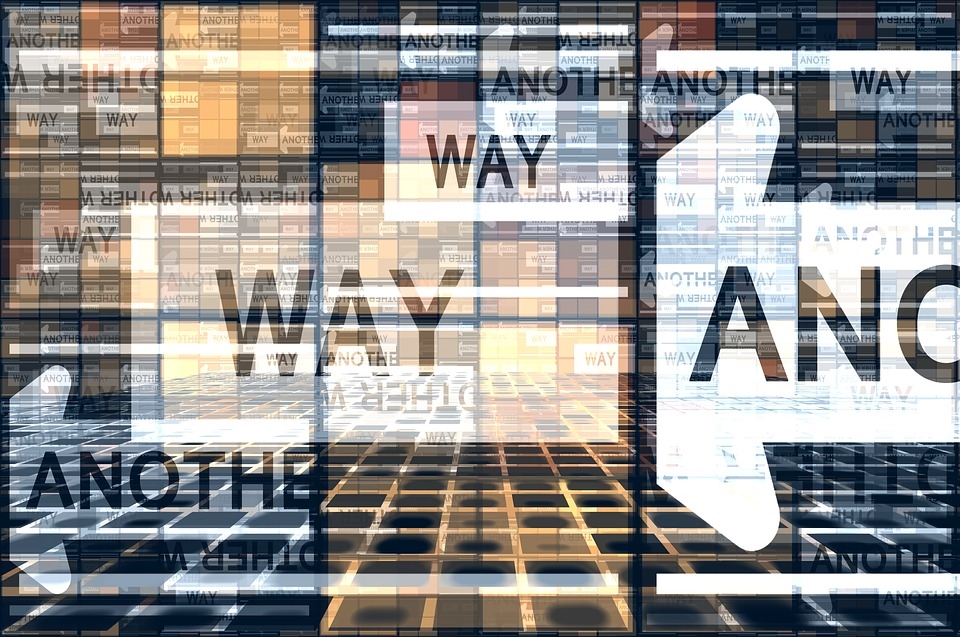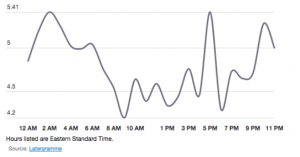Recently, we had a little bit of disruption here at the Basilico domicile. That’s got me thinking about how we can embrace disruption by changing the way we think about change.
Broken & Fix It!
A few months ago, our clothes dryer broke. It’s not like any of us love doing laundry, but, when your dryer breaks, that’s a disruption. My wife said, “Fix it.” I called my local dealer who does all our appliance repairs, and asked them, “Can it be fixed?” and they said, “It’s not worth it.”
It was time to replace the washer and dryer. I inquired, “Hey, what’s the best product at the best price that we can get relatively quickly? Because we don’t want to wait a month.” That happened with our fridge. We actually had to wait six months because of the unique size of it. It needed to fit the cabinetry in our kitchen.
They gave me the options. I told my wife the price, and for about $ 1,100 we could have a new washer and dryer delivered, set up and the old ones taken to the great laundry closet in the sky. Kim researched the models and gave me the okay They were delivered and life was good. Back to normal.
Over this past weekend, my wife looked at me and she said, “I hate that washing machine”. I kind of knew why, but I asked her, “Why do you hate it?” “Well, I can’t set the water level. I have to rinse twice. It does this, and it doesn’t do that.” What it really boiled down to is that she just doesn’t like the way that washing machines work today.
Keep in mind, we’ve been in our house for 20 years, so we had a 20-year-old washer that was very inefficient, old technology. Now we’ve got this brand spanking new set that’s bigger, better, and faster. But, it makes all kinds of noises when it self senses the water levels, and she hates all that stuff. I started thinking to myself – why? The reason is that Kim does not like change. That’s really what it boils down to.
The disruption is more about the differences in the way the washing machine works. We probably could have mitigated that by going together to the washing machine dealer, learning about all the options, looking at all the different samples, and figuring out what had the best dials and options; but we were dealing with an old and dying dog and just did not have the time. It’s not so much that Kim does not like having a new one, it’s just that she didn’t like the change. I realized I needed to look at the change from her perspective.
Disruption In Perspective

Chances are if you’re doing content marketing or you’re working with customers and you’re trying to convince them to change, you have to look at things from their perspective. I work with a lot of sales teams and they often have a wide range of people – everything from Millennials to seniors. When you talk with Millennials, they love to text, but they don’t like face-to-face meetings as much. They’re more comfortable with technology. They are at both ends of the spectrum, when it comes to embracing change and disruption.
It doesn’t necessarily mean everybody reacts the same way. When we deal with more experienced sales people, they’re used to getting on the phone more often. They like face-to-face meetings and they’re not as comfortable with technology. But again, that level of comfort covers both ends of the spectrum because you have some people that are introverts and some people that are extroverts in both of those camps.
Change Your Perspective

When we’re dealing with change, we have to look at things from the perspective of the people that we’re asking to change. What are they comfortable with? What can they handle? Do they feel like they have a vested interest in it? If Kim had a vested interest in the washing machine picked, she probably would not voice that she does not like it as much. Because it was picked and thrust upon her, she feels comfortable with that. And I get it.
If we’re dealing with disruption, how do we change the way we look at change? Well, one of the things I think that’s uber important is you have to start with the “why.” Why do you want to change? What is the thing that you’re trying to convince somebody to do?
Who Is The Champion?
When it comes to selling a product or service, you have to create what’s known as the “champion” or the “change agent.” They have to be on board as to what you’re changing, why you’re changing it, and more importantly how is that change going to affect the entire organization, the people, the processes, and everything it effects. I believe it starts at the top. You have to have a change agent or a champion to be the person who is willing to, not only embrace change but, make the changes themselves. They have to lead by example. That way, they are the person that becomes the model for change.
They also have to be willing to actively listen to the people that are going to be affected by the change, react to objections, and do their best to try to figure out how to manage expectations.
As I said with the sales teams, Millennials are probably a lot more adaptive because they don’t necessarily see themselves rooted in foundations of change. When you deal with more senior people, they tend to resist change. That’s not how it works. That’s not how we do it here. You have to listen to both sides, bring them together, and create a communication network where they start to understand each other’s points of view. You react and try to bring together that team so everybody’s working cohesively.
WIIFM
The second thing you have to do is understand the WIIFM – What’s in it for me? Every single person wants to know – how this is going to make my life better? Chances are it’s going to be more work up front to implement the change, but at the end there should be some payoff. There should be less work later. There should be better results. It should make their life easier. The bottom line is, you have to understand how it will personally benefit each and every member of your organization and get them to become the champion of this change. That it’s going to make their life better, and that it’s going to make your group and the processes better as a whole.
Final Thoughts
Here’s the thing about change – it’s inevitable. Change happens. Everybody deals with change differently. As the leader or the person that’s trying to implement change, you have to have some skills. Those skills include being adaptable, learning how to make change incrementally, and being flexible. You have to be able to listen and react to the people in your organization and help them to get on board with what’s in it for them. And, you have to be willing to fail.
I don’t think we’re going to replace the new washer. I think over time we’ll learn to adapt. We’ll get used to it. I hope that our old washer (if you believe in washer reincarnation) will come back as a hubcap, maybe a garbage can, or something useful – but it certainly changed our lives.
I would love to hear your thoughts on this. Comment below and share your thoughts, ideas or questions about how you embrace disruption. Have you had to overcome any of the presented concepts? What worked and what did not live up to your expectations? Do you have any ideas or advice you could share?
Business & Finance Articles on Business 2 Community
(36)






